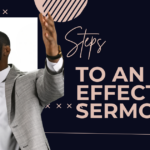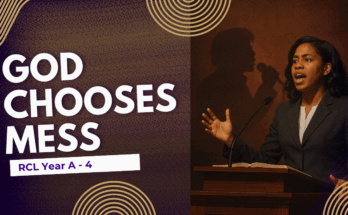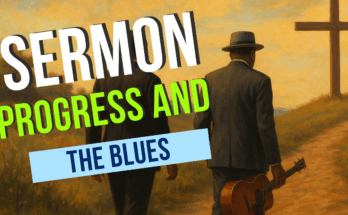As an Amazon Associate I earn from qualifying purchases.
 I feel like starting with the quote from Mark Twain who said: “The rumors of my death have been greatly exaggerated.” There are many who think that the three points and a poem deserve to fall off the landscape of possible sermonic choices. They see it as an artifact of a bygone era that much like the horse and buggy needs to be set aside for more “effective” modes of presentation.
I feel like starting with the quote from Mark Twain who said: “The rumors of my death have been greatly exaggerated.” There are many who think that the three points and a poem deserve to fall off the landscape of possible sermonic choices. They see it as an artifact of a bygone era that much like the horse and buggy needs to be set aside for more “effective” modes of presentation.
Some preachers would promote the dialectic method. Others would promote a narrative form. Still others think that we should not go to the scripture with a set form in mind and should let the text guide the sermonic structural choice.
Introductory Section
But what is the three points and a poem method,and what are you attempting to do in each section? First there are three sections to the sermonic form. The first is an introduction. Here you want to give all of your background data that you have found that is relevant to the sermon. You want to talk about when the scripture was written and to who. In addition, you want to apply this to the lives of the people.
I was listening to a sermon on I. Corinthians where the preacher compared the background to the background of the people who he was addressing. He attempted to eliminate the time difference between the Corinthian church and the present church so that they can see that the text was referring to the present context.
Sometimes people are confused when I use the term “Introduction.” I do not mean introduction to the sermon per-se. I mean an introduction to the life and times of the people in the text and an attempt to realize the importance of it. This will definitely include what you traditionally think of as “introduction,” but it includes more as stated above.
After the introduction is the guiding statement of the sermon. Here we take what we have done in the introduction and use it to come up with a compass for the sermon. This is almost always a practical question. You can get at this question by looking at the Seven Interrogators: Who, What, When, Why, Which, How, and Where. Once you come up with the guiding statement, the sermon writes itself. An example is “How to Stand in the Midst of Trouble” based on Ephesians 6:13. Please note that this may or may not be the sermon title. In addition, be sure to state that clearly before moving to the next section of the sermon.
Three Points
Here, you already have the text, you have the guiding question. Now you simply need three answers to the question that you just presented. A few words here. First, the answer should be explicitly or implicitly in the scripture. People should not wonder how you made the connection. It is possible someone may disagree with your application, but they will at least know the connection you tried to make. Second, you need to illustrate each answer with a biblical, historical, or contemporary story. Here you want to drive the point home by illustrating it. Next, you need to tell people explicitly how to accomplish the point. Finally, you must explicitly define what you mean by the point.
So using the example Ephesians 6:13 and our guiding statement “How to Stand in the midst of Trouble” we have three points. First put on the full armor, second, prepare for the day of evil, and finally, you just stand. Looking at the points, the first one says to put on the full armor. We would explicitly show that it is in the scripture. We might then illustrate and define the point. We might talk about armor in battle and why it is used and why it is important, we might talk about the battle we are in with Satan. We will definitely tell that we are not talking about battling with guns or swords. In addition, we must clearly tell people HOW to put on the full armor. That is the first point.
Then we might look at the second point which is to “prepare for the day of evil.” This is only implicitly in the text so we have to explicitly point to it in this section. Note that the text says: “so that when the day of evil comes, you may be able to stand your ground.” This implies that if you are going to stand in the future, you have to prepare for it in the present. Go ahead and state it that clearly if you have to. Then once again you want to tell people how to do that today. In addition, describe the point fully.
The third point is to just stand. In it we have two sides, “having done all” and “just stand.” You might give a story of perseverance. Remember to tell people how to do this. You may not like these three points, get three more. I don’t think I would preach it as it stands, but I just use it as an example.
The Poem
By poem, I don’t mean a poem per-se, but a celebration. Here you want to celebrate the answering of the question. In our example, we want to celebrate that we will stand. We want to celebrate that no matter the pain and heartache, that we can make it through it. You do this by gathering materials like poems, hymns, spirituals, gospel songs, and scriptures that are what I call “shouting materials.” These are materials that emphasize God’s power over our circumstances and our ability to persevere.
The point here is that you are ending with a “celebration.” I think it is interesting how many sermons have good beginnings, a solid middle, and then die out in the end. You need to end strong, and you do that by celebrating the Good news that God is on our side.
Some Notes
- The three points should be progressively “intense.” You should be moving up the intensity scale as you preach the sermon.
- This is not the only way to preach a sermon. I would encourage you to try other methods.
- If you want to use this method, listen to Frederick D. Haynes III who is a master of this method.
- Koller’s How to Preach Without Notes provides a more complex structure than I am describing here, but he does provide some very useful tools for creating this kind of sermon in Chapter 7.
Amazon and the Amazon logo are trademarks of Amazon.com, Inc, or its affiliates.







Thank you, I like to use a variety of sermon structures that I believe best communicate the message for the particular audience for which I am addressing. However, I always begin with the three points and a poem structure because I’m able to organize the material and see the movements.
The three points and a poem structure also is perhaps the most comfortable for the hearers, they can follow easier.
Thanks again.
Rev. Dr. Martin, L. King, Jr. stated that the preacher should know their audience and that he was aware of the three type of worshippers that made up his congregation. Although, I, strongly agree with you, more, importantly you have to know your audience. You don’t want to make people happy twice. You can’t go wrong when you stick to sound Biblical doctrine from the scripture. Sound prophectic Biblical based sermons and the high celebration at the end of the sermon is one of the things the Black Church preaching tradition is know for.
Thanks Doc for emphasizing that Biblical soundness and “knowing the audience” is of utmost importance…the understanding the congregation is the first plank in my “supercharge Your sermons” system. However, in this post we simply talked about a sermonic structure that is surprisingly flexible and powerful….
I agree using the traditional sermon structures is preferred. This is because it is tried and tested. However, it is better to try other means perhaps with the combination of the traditional way. Most importantly, we should always know the hearers of our sermon. So that our message to the congregation would have a “perfect” fit.
Thanks you Rev. Cox for your article on three points and a poem. It clarifies some of my concerns in my sermon preparations. I also follow the basic structure: first, the Introduction which includes explanation of the background of the text, its relevance and importance in contemporary life. Second is the Body which starts with the guiding statement and question answered by the three points derived from the text. The guiding statement and question unifies the three answers. The third is conclusion which includes summarizing the three points for each one in the congregation to remember them in condensed form. The conclusion also contains general application and call for individual response. I do not have any specific place for celebration. I normally celebrate after each point. After reading your article I am considering ending my sermons with a final celebration using the guiding statement in showing that God is on our side.